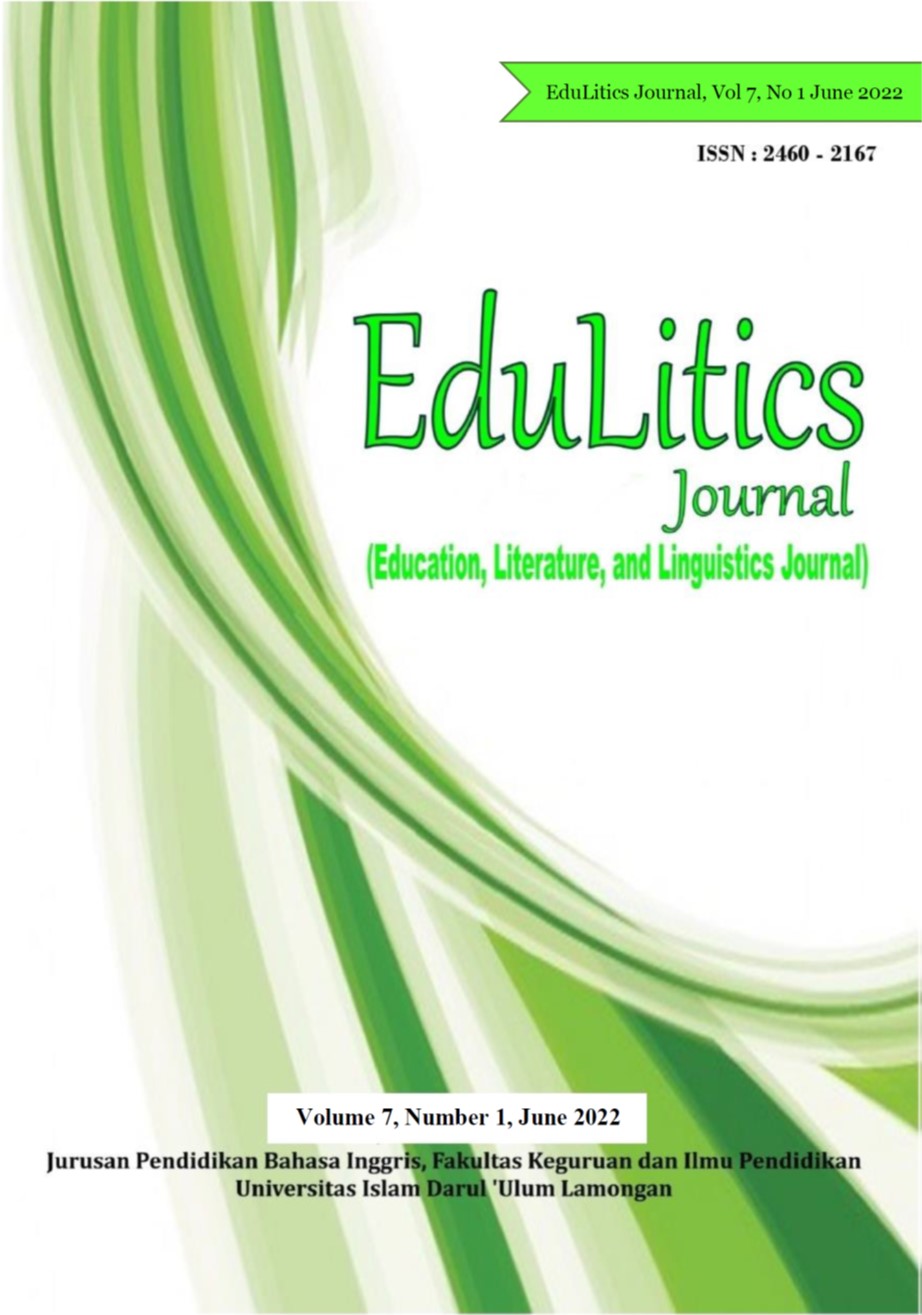“Hybrid One” as Media to Facilitate English Learning in Blended Learning System at SMPN 1 Lamongan
Abstract
Hybrid One” is one of the learning management systems which is own by SMPN 1 Lamongan to facilitate students learning process while implementing a blended learning system. This study used a descriptive qualitative design to find how “Hybrid One” works and how the use of “Hybrid One” during the learning process. Researchers used two instruments to find the data, those are Questionnaires which were distributed to seventh-grade students, and interview guidelines which were conducted to 3 English teachers in the school selected. The result of the study showed that “Hybrid One” is an ideal learning management system to be used to support the students’ learning process during this pandemic era. It could be seen from the aspects, they are Implementation, strength, weakness, effectiveness, and application which could work and use appropriately. Although a feature of Hybrid One cannot be used maximally, the others could work maximally during the English learning process
Downloads
References
Bruce, B., & Levin, J. (2001) Roles for new technologies in language arts: inquiry, communication, construction, and expression. In J.Jenson, J. Flood, D.
Chew E., Jones N., & Turner D. (2008). Critical Review of the Blended Learning Models Based on Maslow’s and Vygotsky’s Educational Theory’ in Hybrid Learning and Education. Berlin, Springer Verlag Publ.
Cresswell. J. W. (2012) Educational Research Design: Planning, Conducting, and Evaluating Quantitative and Qualitative Research. Boston: Pearson Education Inc.
Fatmawati, L., Sofeny, D., & Zahro, S. K. (2021). Students’ Attitudes Toward The Transformation of Online to Offline Learning in EFL Classroom. IJECA (International Journal of Education and Curriculum Application), 4(3), 264-272.
Indarto, P., Fatoni, M., & Nurhidayat, N. (2018). Model Pembelajaran Hybrid Learning pada Mata Kuliah Sepakbola di Pendidikan Olahraga FKIP UMS. Seminar Nasional Pendidikan 2018.
Lanham, E., Augar, N., & Zhou, W. (2005). Creat¬ing a blended learning model for cross-cultural e-learning: Putting theory into practice. In Proceedings of the World Conference on E-Learning in Corporate, Government, Healthcare, and Higher Education.
Miles, M. B., Huberman, A. M., & Saldaña, J. (2018). Qualitative data analysis: A methods sourcebook. Sage publications.
Morris, B. (1962). The function of media in the public schools. Audiovisual Instruction.
Mulyono, Nurwakhid, & Susilawati, L., (2020). Penerapan media pembelajaran hybrid learning pada matakuliah membaca mahasiswa pendidikan Bahasa Indonesia IKIP Budi Utomo Malang. Basastra, 9(3), 289-295.
Sandholtz. (1997) Teaching with Technology: Creating Studrnts Centre Classrooms. In www.apple.com/ education/research
Staker H., & Horn M.B. (2016). Classifying K-12 Blended Learning. Available at: http://www.christenseninstitute.org/wp-content/uploads/2013/04/Classifying-K-12blendedlearning.pdf
Sukarno. (2014) Peningkatan Kualitas Perkuliahan Melalui Penerapan Model Blended Learning Dengan Aplikasi Learning Management System Pada Mahasiswa Program Sarjana Kependidikan Bagi Guru Dalam Jabatan, Jurnal Pendidikan Dan Pembelajaran, 21(1).
Authors retain copyright and grant the journal the right of first publication with the work simultaneously licensed under a Creative Commons Attribution-ShareAlike 4.0 International License that allows others to share the work with an acknowledgment of the work's authorship and initial publication in this journal.
Authors are able to enter into separate, additional contractual arrangements for the non-exclusive distribution of the journal's published version of the work (e.g., post it to an institutional repository or publish it in a book), with an acknowledgment of its initial publication in this journal.
Authors are permitted and encouraged to post their work online (e.g., in institutional repositories or on their website) before and during the submission process, as it can lead to productive exchanges and earlier and greater citation of published work.






_(1).png)


